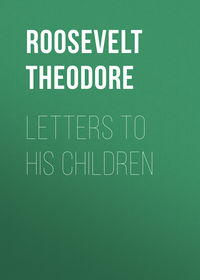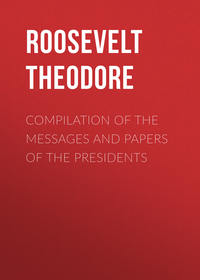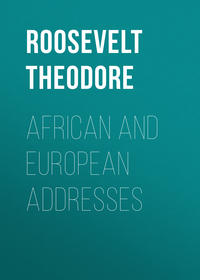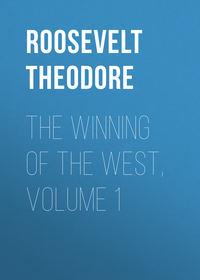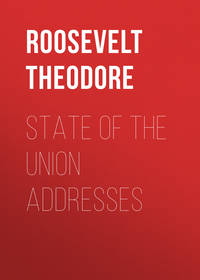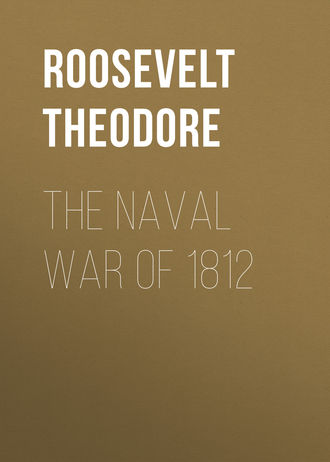 полная версия
полная версияThe Naval War of 1812
The 44's were thus true frigates, with one complete battery of long guns and one interrupted one of carronades. That they were better than any other frigates was highly creditable to our ingenuity and national skill. We cannot, perhaps, lay claim to the invention and first use of the heavy frigate, for 24-pounder frigates were already in the service of at least three nations, and the French 36-pound carronnade, in use on their spar-decks, threw a heavier ball than our 42-pounder. But we had enlarged and perfected the heavy frigate, and were the first nation that ever used it effectively. The French Forte and the Danish Nayaden shared the fate of ships carrying guns of lighter calibre; and the British 24-pounders, like the Endymion, had never accomplished any thing. Hitherto there had been a strong feeling, especially in England, that an 18-pound gun was as effective as a 24- in arming a frigate; we made a complete revolution in this respect. England had been building only 18-pounder vessels when she ought to have been building 24-pounders. It was greatly to our credit that our average frigate was superior to the average British frigate; exactly as it was to our discredit that the Essex was so ineffectively armed. Captain Porter owed his defeat chiefly to his ineffective guns, but also to having lost his topmast, to the weather being unfavorable, and, still more, to the admirable skill with which Hilyar used his superior armament. The Java, Macedonian, and Guerrière owed their defeat partly to their lighter guns, but much more to the fact that their captains and seamen did not display either as good seamanship or as good gunnery as their foes. Inferiority in armament was a factor to be taken into account in all the four cases, but it was more marked in that of the Essex than in the other three; it would have been fairer for Porter to say that he had been captured by a line-of-battle ship, than for the captain of the Java to make that assertion. In this last case the forces of the two ships compared almost exactly as their rates. A 44 was matched against a 38; it was not surprising that she should win, but it was surprising that she should win with ease and impunity. The long 24's on the Constitution's gun-deck no more made her a line-of-battle ship than the 32-pound carronades mounted on an English frigate's quarter-deck and forecastle made her a line-of-battle ship when opposed to a Frenchman with only 8's and 6's on his spar-deck. When, a few years before, the English Phoebe had captured the French Nereide, their broadsides were respectively 407 and 258 pounds, a greater disparity than in any of our successful fights; yet no author thought of claiming that the Phoebe was any thing but a frigate. So with the Clyde, throwing 425 lbs., which took the Vestale, throwing but 246. The facts were that 18-pounder frigates had captured 12-pounders, exactly as our 24-pounders in turn captured the 18-pounders.
Shortly before Great Britain declared war on us, one of her 18-pounder frigates, the San Florenzo, throwing 476 lbs. in a broadside, captured the 12-pounder French frigate Psyché, whose broadside was only 246 lbs. The force of the former was thus almost double that of the latter, yet the battle was long and desperate, the English losing 48 and the French 124 men. This conflict, then, reflected as much credit on the skill and seamanship of the defeated as of the victorious side; the difference in loss could fairly be ascribed to the difference in weight of metal. But where, as in the famous ship-duels of 1812, the difference in force is only a fifth, instead of a half and yet the slaughter, instead of being as five is to two, is as six to one, then the victory is certainly to be ascribed as much to superiority in skill as to superiority in force. But, on the other hand, it should always be remembered that there was a very decided superiority in force. It is a very discreditable feature of many of our naval histories that they utterly ignore this superiority, seeming ashamed to confess that it existed. In reality it was something to be proud of. It was highly to the credit of the United States that her frigates were of better make and armament than any others; it always speaks well for a nation's energy and capacity that any of her implements of warfare are of superior kind. This is a perfectly legitimate reason for pride.
It spoke well for the Prussians in 1866 that they opposed breech-loaders to the muzzle-loaders of the Austrians; but it would be folly to give all the credit of the victory to the breech-loaders and none to Moltke and his lieutenants. Thus, it must remembered that two things contributed to our victories. One was the excellent make and armament of our ships; the other was the skilful seamanship, excellent discipline, and superb gunnery of the men who were in them. British writers are apt only to speak of the first, and Americans only of the last, whereas both should be taken into consideration.
To sum up: the American 44-gun frigate was a true frigate, in build and armament, properly rated, stronger than a 38-gun frigate just about in the proportion of 44 to 38, and not exceeding in strength an 18-pounder frigate as much as the latter exceeded one carrying 12-pounders. They were in no way whatever line-of-battle ships; but they were superior to any other frigates afloat, and, what is still more important, they were better manned and commanded than the average frigate of any other navy. Lord Codrington says ("Memoirs," i, p. 310): "But I well know the system of favoritism and borough corruption prevails so very much that many people are promoted and kept in command that should be dismissed the service, and while such is the case the few Americans chosen for their merit may be expected to follow up their successes except where they meet with our best officers on even terms." [Footnote: To show that I am not quoting an authority biassed in our favor I will give Sir Edward Codrington's opinion of our rural better class (i, 318). "It is curious to observe the animosity which prevails here among what is called the better order of people, which I think is more a misnomer here than in any other country I have ever been. Their whig and tory are democrat and federalist, and it would seem for the sake of giving vent to that bitterness of hatred which marks the Yankee character, every gentleman (God save the term) who takes possession of a property adopts the opposite political creed to that of his nearest neighbor."] The small size of our navy was probably to a certain extent effective in keeping it up to a high standard; but this is not the only explanation, as can be seen by Portugal's small and poor navy. On the other hand, the champions or pick of a large navy ought to be better than the champions of a small one. [Footnote: In speaking of tonnage I wish I could have got better authority than James for the British side of the question. He is so bitter that it involuntarily gives one a distrust of his judgment. Thus, in speaking of the Penguin's capture, he, in endeavoring to show that the Hornet's loss was greater than she acknowledged, says, "several of the dangerously wounded were thrown overboard because the surgeon was afraid to amputate, owing to his want of experience" ("Naval Occurrences," 492). Now what could persuade a writer to make such a foolish accusation? No matter how utterly depraved and brutal Captain Biddle might be, he would certainly not throw his wounded over alive because he feared they might die. Again, in vol. vi, p. 546, he says: "Captain Stewart had caused the Cyane to be painted to resemble a 36-gun frigate. The object of this was to aggrandize his exploit in the eyes of the gaping citizens of Boston." No matter how skilful an artist Captain Stewart was, and no matter how great the gaping capacities of the Bostonians, the Cyane (which by the way went to New York and not Boston) could no more be painted to look like a 36-gun frigate than a schooner could be painted to look like a brig. Instances of rancor like these two occur constantly in his work, and make it very difficult to separate what is matter of fact from what is matter of opinion. I always rely on the British official accounts when they can be reached, except in the case of the Java, which seem garbled. That such was sometimes the case with British officials is testified to by both James (vol. iv, p. 17) and Brenton (vol. ii, p. 454, note). From the "Memoir of Admiral Broke" we learn that his public letter was wrong in a number of particulars. See also any one of the numerous biographies of Lord Dundonald, the hero of the little Speedy's fight. It is very unfortunate that the British stopped publishing official accounts of their defeats; it could not well help giving rise to unpleasant suspicions.
It may be as well to mention here, again, that James' accusations do not really detract from the interest attaching to the war, and its value for purposes of study. If, as he says, the American commanders were cowards, and their crews renegades, it is well worth while to learn the lesson that good training will make such men able to beat brave officers with loyal crews. And why did the British have such bad average crews as he makes out? He says, for instance, that the Java's was unusually bad; yet Brenton says (vol. ii, p. 461) it was like "the generality of our crews." It is worth while explaining the reason that such a crew was generally better than a French and worse than an American one.]
Again, the armaments of the American as well as of the British ships were composed of three very different styles of guns. The first, or long gun, was enormously long and thick-barrelled in comparison to its bore, and in consequence very heavy; it possessed a very long range, and varied in calibre from two to forty-two pounds. The ordinary calibres in our navy were 6, 9, 12, 18, and 24. The second style was the carronade, a short, light gun of large bore; compared to a long gun of the same weight it carried a much heavier ball for a much shorter distance. The chief calibres were 9, 12, 18, 24, 32, 42, and 68-pounders, the first and the last being hardly in use in our navy. The third style was the columbiad, of an intermediate grade between the first two. Thus it is seen that a gun of one style by no means corresponds to a gun of another style of the same calibre. As a rough example, a long 12, a columbiad 18, and a 32-pound carronade would be about equivalent to one another. These guns were mounted on two different types of vessel. The first was flush-decked; that is, it had a single straight open deck on which all the guns were mounted. This class included one heavy corvette, (the Adams), the ship-sloops, and the brig-sloops. Through the bow-chase port, on each side, each of these mounted a long gun; the rest of their guns were carronades, except in the case of the Adams, which had all long guns. Above these came the frigates, whose gun-deck was covered above by another deck; on the fore and aft parts (forecastle and quarter-deck) of this upper, open deck were also mounted guns. The main-deck guns were all long, except on the Essex, which had carronades; on the quarter-deck were mounted carronades, and on the forecastle also carronades, with two long bow-chasers.
Where two ships of similar armament fought one another, it is easy to get the comparative force by simply comparing the weight in broadsides, each side presenting very nearly the same proportion of long guns to carronades. For such a broadside we take half the guns mounted in the ordinary way; and all guns mounted on pivots or shifting. Thus Perry's force in guns was 54 to Barclay's 63; yet each presented 34 in broadside. Again, each of the British brig-sloops mounted 19 guns, presenting 10 in broadside. Besides these, some ships mounted bow-chasers run through the bridle-ports, or stern-chasers, neither of which could be used in broadsides. Nevertheless, I include them, both because it works in about an equal number of cases against each navy, and because they were sometimes terribly effective. James excludes the Guerrière's bow-chaser; in reality he ought to have included both it and its fellow, as they worked more damage than all the broadside guns put together. Again, he excludes the Endymion's bow-chasers, though in her action they proved invaluable. Yet he includes those of the Enterprise and Argus, though the former's were probably not fired. So I shall take the half of the fixed, plus all the movable guns aboard, in comparing broadside force.
But the chief difficulty appears when guns of one style are matched against those of another. If a ship armed with long 12's, meets one armed with 32-pound carronades, which is superior in force? At long range the first, and at short range the second; and of course each captain is pretty sure to insist that "circumstances" forced him to fight at a disadvantage. The result would depend largely on the skill or luck of each commander in choosing position.
One thing is certain; long guns are more formidable than carronades of the same calibre. There are exemplifications of this rule on both sides; of course, American writers, as a rule, only pay attention to one set of cases, and British to the others. The Cyane and Levant threw a heavier broadside than the Constitution but were certainly less formidably armed; and the Essex threw a heavier broadside than the Phoebe, yet was also less formidable. On Lake Ontario the American ship General Pike threw less metal at a broadside than either of her two chief antagonists, but neither could be called her equal; while on Lake Champlain a parallel case is afforded by the British ship Confiance. Supposing that two ships throw the same broadside weight of metal, one from long guns, the other from carronades, at short range they are equal; at long, one has it all her own way. Her captain thus certainly has a great superiority of force, and if he does not take advantage of it it is owing to his adversary's skill or his own mismanagement. As a mere approximation, it may be assumed, in comparing the broadsides of two vessels or squadrons, that long guns count for at least twice as much as carronades of the same calibre. Thus on Lake Champlain Captain Downie possessed an immense advantage in his long guns, which Commodore Macdonough's exceedingly good arrangements nullified. Sometimes part of the advantage may be willingly foregone, so as to acquire some other. Had the Constitution kept at long bowls with the Cyane and Levant she could have probably captured one without any loss to herself, while the other would have escaped; she preferred to run down close so as to insure the capture of both, knowing that even at close quarters long guns are somewhat better than short ones (not to mention her other advantages in thick scantling, speed, etc.). The British carronades often upset in action; this was either owing to their having been insufficiently secured, and to this remaining undiscovered because the men were not exercised at the guns, or else it was because the unpractised sailors would greatly overcharge them. Our better-trained sailors on the ocean rarely committed these blunders, but the less-skilled crews on the lakes did so as often as their antagonists.
But while the Americans thus, as a rule, had heavier and better-fitted guns, they labored under one or two disadvantages. Our foundries were generally not as good as those of the British, and our guns, in consequence, more likely to burst; it was an accident of this nature which saved the British Belvidera; and the General Pike, under Commodore Chauncy, and the new American frigate Guerrière suffered in the same way; while often the muzzles of the guns would crack. A more universal disadvantage was in the short weight of our shot. When Captain Blakely sunk the Avon he officially reported that her four shot which came aboard weighed just 32 pounds apiece, a pound and three quarters more than his heaviest; this would make his average shot about 2 1/2 pounds less, or rather over 7 per cent. Exactly similar statements were made by the officers of the Constitution in her three engagements. Thus when she fought the Java, she threw at a broadside, as already stated, 704 pounds; the Java mounted 28 long 18's, 18 32-pound carronades, 2 long 12's, and one shifting 24-pound carronade, a broadside of 576 pounds. Yet by the actual weighing of all the different shot on both sides it was found that the difference in broadside force was only about 77 pounds, or the Constitution's shot were about 7 per cent, short weight. The long 24's of the United States each threw a shot but 4 1/4 pounds heavier than the long 18's of the Macedonian; here again the difference was about 7 per cent. The same difference existed in favor of the Penguin and Epervier compared with the Wasp and Hornet. Mr. Fenimore Cooper [Footnote: See "Naval History," i, p. 380.] weighed a great number of shot some time after the war. The later castings, even weighed nearly 5 per cent, less than the British shot, and some of the older ones, about 9 per cent. The average is safe to take at 7 per cent. less, and I shall throughout make this allowance for ocean cruisers. The deficit was sometimes owing to windage, but more often the shot was of full size but defective in density. The effect of this can be gathered from the following quotation from the work of a British artillerist: "The greater the density of shot of like calibres, projected with equal velocity and elevation, the greater the range, accuracy, and penetration." [Footnote: "Heavy Ordnance," Captain T. F. Simmons, R. A., London, 1837. James supposes that the "Yankee captains" have in each case hunted round till they could get particularly small American shot to weigh; and also denies that short weight is a disadvantage. The last proposition carried out logically would lead to some rather astonishing results.] This defectiveness in density might be a serious injury in a contest at a long distance, but would make but little difference at close quarters (although it may have been partly owing to their short weight that so many of the Chesapeake's shot failed to penetrate the Shannon's hull). Thus in the actions with the Macedonian and Java the American frigates showed excellent practice when the contest was carried on within fair distance, while their first broadsides at long range went very wild; but in the case of the Guerrière, the Constitution reserved her fire for close quarters, and was probably not at all affected by the short weight of her shot.
As to the officers and crew of a 44-gun frigate, the following was the regular complement established by law: [Footnote: See State Papers, vol. xiv, 159 (Washington, 1834).]
1 captain,
4 lieutenants,
2 lieutenants of marines,
2 sailing-masters,
2 master's mates,
7 midshipmen,
1 purser,
1 surgeon,
2 surgeon's mates,
1 clerk,
1 carpenter,
2 carpenter's mates,
1 boatswain,
2 boatswain's mates,
1 yeoman of gun-room,
1 gunner,
11 quarter gunners,
1 coxswain,
1 sailmaker,
1 cooper,
1 steward,
1 armorer,
1 master of arms,
1 cook,
1 chaplain.
__
50
120 able seamen, 150 ordinary seamen, 30 boys, 50 marines. ___ 400 in all.
An 18-gun ship had 32 officers and petty officers, 30 able seamen, 46 ordinary seamen, 12 boys, and 20 marines—140 in all. Sometimes ships put to sea without their full complements (as in the case of the first Wasp), but more often with supernumeraries aboard. The weapons for close quarters were pikes, cutlasses, and a few axes; while the marines and some of the topmen had muskets, and occasionally rifles.
In comparing the forces of the contestants I have always given the number of men in crew; but this in most cases was unnecessary. When there were plenty of men to handle the guns, trim the sails, make repairs, act as marines, etc., any additional number simply served to increase the slaughter on board. The Guerrière undoubtedly suffered from being short-handed, but neither the Macedonian nor Java would have been benefited by the presence of a hundred additional men. Barclay possessed about as many men as Perry, but this did not give him an equality of force. The Penguin and Frolic would have been taken just as surely had the Hornet and Wasp had a dozen men less apiece than they did. The principal case where numbers would help would be in a hand-to-hand fight. Thus the Chesapeake having fifty more men than the Shannon ought to have been successful; but she was not, because the superiority of her crew in numbers was more than counterbalanced by the superiority of the Shannon's crew in other respects. The result of the battle of Lake Champlain, which was fought at anchor, with the fleets too far apart for musketry to reach, was not in the slightest degree affected by the number of men on either side, as both combatants had amply enough to manage the guns and perform every other service.
In all these conflicts the courage of both parties is taken for granted: it was not so much a factor in gaining the victory, as one which if lacking was fatal to all chances of success. In the engagements between regular cruisers, not a single one was gained by superiority in courage. The crews of both the Argus and Epervier certainly flinched; but had they fought never so bravely they were too unskilful to win. The Chesapeake's crew could hardly be said to lack courage; it was more that they were inferior to their opponents in discipline as well as in skill.
There was but one conflict during the war where the victory could be said to be owing to superiority in pluck. This was when the Neufchatel privateer beat off the boats of the Endymion. The privateersmen suffered a heavier proportional loss than their assailants, and they gained the victory by sheer ability to stand punishment.
For convenience in comparing them I give in tabulated form the force of the three British 38's taken by American 44's (allowing for short weight of metal of latter).
CONSTITUTION. GUERRIÈRE. 30 long 24's, 30 long 18's, 2 long 24's, 2 long 12's, 22 short 32's. 16 short 32's, ___________________________ 1 short 18. Broadside, nominal, 736 lbs. __________________ real. 684 lbs. Broadside, 556 lbs.
UNITED STATES MACEDONIAN 30 long 24's, 28 long 18's, 2 long 24's, 2 long 12's, 22 short 42's. 2 long 9's, ___________________________ 16 short 32's, Broadside, nominal, 846 lbs. 1 short 18. real, 786 lbs. ___________________ Broadside, 547 lbs.
CONSTITUTION JAVA 30 long 24's, 28 long 18's, 2 long 24's, 2 long 12's, 20 short 32's. 18 short 32's, ____________________________ 1 short 24. Broadside, nominal, 704 lbs. ___________________ real. 654 lbs. Broadside. 576 lbs.
The smallest line-of-battle ship, the 74, with only long 18's on the second deck, was armed as follows:
28 long 32's, 28 " 18's, 6 " 12's. 14 short 32's 7 " 18's
or a broadside of 1,032 lbs., 736 from long guns, 296 from carronades; while the Constitution threw (in reality) 684 lbs., 356 from long guns, and 328 from her carronades, and the United States 102 lbs. more from her carronades. Remembering the difference between long guns and carronades, and considering sixteen of the 74's long 18's as being replaced by 42-pound carronades [Footnote: That this change would leave the force about as it was, can be gathered from the fact that the Adams and John Adams both of which had been armed with 42 pound carronades (which were sent to Sackett's Harbor), had them replaced by long and medium 18 pounders, these being considered to be formidable: so that the substitution of 42-pound carronades would, if any thing, reduce the force of the 74] (so as to get the metal on the ships distributed in similar proportions between the two styles of cannon), we get as the 74's broadside 592 lbs from long guns, and 632 from carronades. The United States threw nominally 360 and 486, and the Constitution nominally 360 and 352; so the 74 was superior even to the former nominally about as three is to two; while the Constitution, if "a line-of-battle ship," was disguised to such a degree that she was in reality of but little more than one half the force of one of the smallest true liners England possessed!


